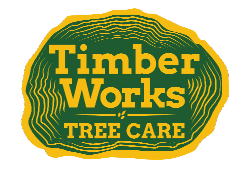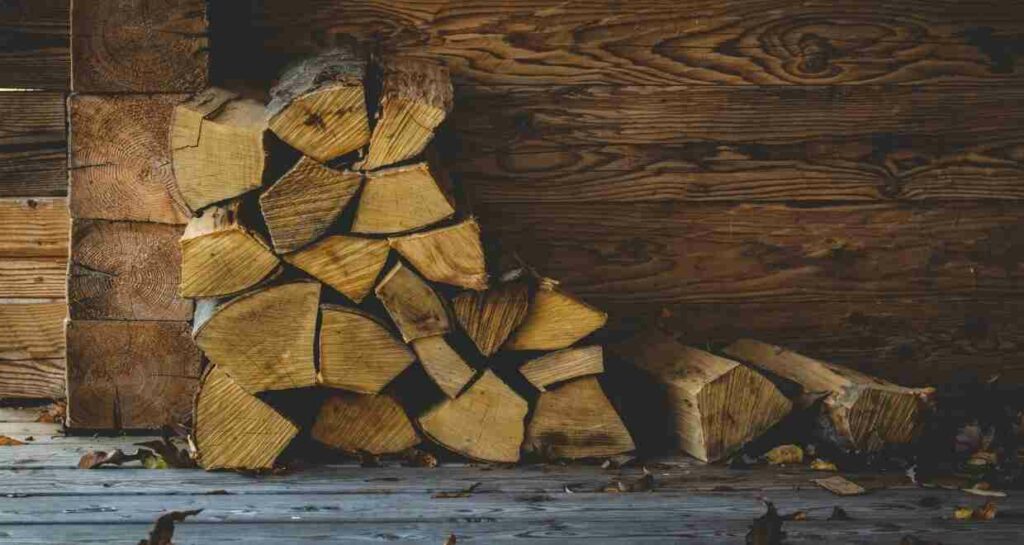I’m sure you’ve been in this position: the winter is fast approaching, and you don’t have enough firewood to last you through those cold months. You need firewood delivery, and you need it fast.
But where do you find firewood for sale? And how can you make sure you aren’t overpaying? And do you know how to stack it to keep it dry and ready to burn?
Don’t worry.
Timber Works Tree Care is going to answer all those firewood delivery questions for you right now.
Types of Firewood and Firewood Delivery
The first thing you should know about firewood is the difference between hardwood and softwood.
As you might imagine, these two types of wood burn differently.
Softwood is not necessarily soft like you might think: you can actually get softwood that is harder to the touch than technical “hardwood.” The terms have more to do with the type of growth than the actual hardness of the wood.
For instance, hardwoods have microscopic porous vessels throughout the wood which distribute water along the tree. Softwoods don’t have these visible pores, because of the sap produced which fills them up.
So what does that mean?
It means the wood turns out differently.
Because softwoods are usually not has dense, they tend to burn faster. Additionally, because of the high volume of sap, they also tend to give off a lot of creosote, or tar produced by smoke, which isn’t good for your chimney. For these two reasons, hardwoods are generally a better choice for firewood.
So how can you figure out what trees you should use?
Here are some easy tips for telling the difference between hardwoods and softwoods:
Hardwoods come from trees that are usually broad-leaved, flower to pollinate, and tend to grow slower than softwoods. Hardwoods also shed their leaves during the autumn and winter months, and are more resistant to fire. Some examples include: oak, hickory, walnut, beech, mahogany, and maple.
Softwoods come from trees that have needles (usually), and grow cones to pollinate, and tend to grow very quickly. Some softwoods are often termed “junk wood,” and are less resistant to fire. Some examples include: yew, birch, douglas fir, hemlock, cedar, and spruce.
How Long Should I Season It?
Once you’ve found the right type of wood, it’s time to split and stack it. But when should you do that? Should you let it cure first?
A good rule of thumb is to let all freshly-cut firewood sit for six months before burning it. Wood has both water inside the cells of the wood and “free water” (which is why when you cut a green tree it feels wet), and you want it to dry out before burning it.
Firewood with high moisture will burn, but it is a pain to light and keep lit, and will suck much of the fire’s energy into drying out the firewood instead of heating your home. Another important reason to season your firewood is that, because the fire isn’t as hot when burning wet wood, the creosote doesn’t burn off, and will line your chimney and flue pipes.
While not the end of the world (eventually all chimneys need to be cleaned), this can add a fire risk to your home and produces dark black smoke, leading to that heavy smoke smell.
The best time to cut wood is in the later winter / early spring, in order to ensure you have at least six months of seasoning time. How can you tell if the wood is seasoned? Does it smell like sap? Is it green under the bark? Has it begun cracking? Has the color changed from white to yellow? Click here to learn more about seasoned firewood and firewood delivery.
How to Split / Stack Wood
Splitting wood enables it to season more quickly, as well as burn better once you start using your fireplace.
And while splitting firewood can be tiring and time-intensive work, it is also incredibly relaxing and even healthy. [http://www.livestrong.com/article/341031-wood-splitting-for-exercise/]
If you have tons of firewood to get through in a short amount of time, however, you can rent a log splitter from Lowes or Home Depot and get to work. These log splitters don’t get tired, and they can split right through those logs that are a little too tough or have a few too many knots in them for you to split by yourself.
When it comes to stacking wood, there are a few things you want to keep in mind.
You want your firewood to dry out, and to stay dry, so make sure water won’t pool underneath your woodpile. Shipping pallets make great baseboards, as do old railroad ties.
You can go with a simple stack, a round stack, or even two “pillars” of crisscrossed split logs on the ends with a simple stack between. The point is to get airflow between the logs and enable it to stand up on its own.
After you’ve stacked it, make sure to cover your woodpile with a tarp in order to protect it from the elements. Weight down the tarp with rocks, logs, or weights attached at the bottom.
How to Measure Firewood
When getting a firewood delivery, you will typically pay by the cord.
A cord of wood is defined as stacked logs 4x4x8, that is, four feet high, four feet wide, and eight feet long. The volume of this is 128 cubic feet of wood. That’s a lot of wood.
Depending on the size of the building you will be heating and the severity of the winter, you might go through 4-5 cords over the course of the winter.
How much will you pay per cord?
According to Bankrate.com, you can expect to pay anywhere from $120 to $400 per cord, depending on the type of wood (hardwood or softwood), whether they deliver or not, and what time of year it is.
If you’re trying to buy firewood in mid-January, then you will probably pay a little more. If you need to buy it, try to buy it early!
Have more questions about firewood delivery?
Did you get the answers you were looking for? If not, give us a ring, and we’ll be happy to answer your questions. Check out our blog for more helpful tips!
Timber Works Tree Care is a 24 / 7 tree service, tree removal, and firewood delivery company based in northern VA. Contact us for a free consultation and estimate!







